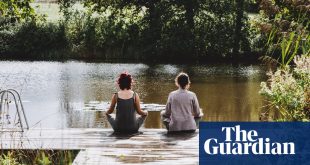Kevin smiles from ear to ear at the sight of a common periwinkle. This pretty and striated mollusc, clinging to a sandstone where the Solent laps the peach sands of St Helens beach, speaks to Kevin of something pleasingly enduring in the natural world. Like most members of our 12-strong group, Kevin signed up for Hampshire and Isle of Wight Wildlife Trust’s coastal survey volunteer day to help soothe his climate anxiety.
“It feels good to be doing something for our coastal environment rather than sitting at home worrying about ecosystem collapse,” he says; the last time he poked about in rock pools was as a child in the 1970s.
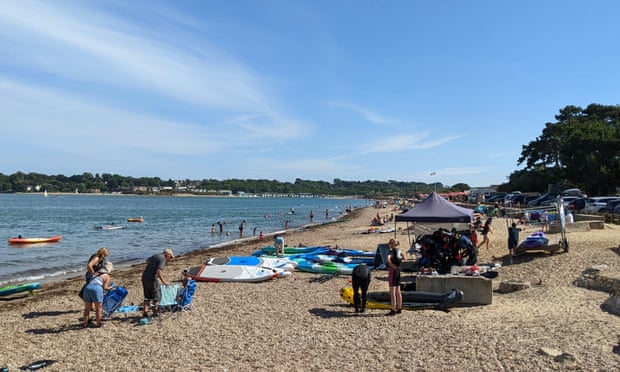
Kevin and I are standing side by side, up to our welly ankles in an Isle of Wight rock pool, marvelling at the marine life around our feet. There are molluscs of all sizes, and metres of blond bladderwrack; there are the peculiar, potato-shaped organisms known as sea squirts and, further into the intertidal zone where the green shore seaweeds give way to gold and red hues, today’s holy grail: a group of flowering marine plants that represent one of our planet’s bright hopes when it comes to tackling climate change.
“Seagrasses are the unsung heroes of marine ecosystems,” says Emily Stroud, a marine biologist, who is leading today’s Isle of Wight intertidal survey. “They absorb massive amounts of carbon dioxide from the surrounding seawater, and their long leaves slow the water’s flow, which encourages carbon to settle on the seabed, where it is then buried. These little stars protect us from coastal erosion, too.”
Sadly, in most global contexts these industrious marine flora – which include ribbon-like common eelgrasses, the flat-fronted enhalus grass and Mediterranean species such as Neptune grass – are in retreat. More than 90% of Britain’s seagrass has been lost, with much of that destruction occurring in the 20th century, when poor water quality caused by rapid industrialisation led to a wasting disease that razed our native meadows. Sediments and turbidity have played their part, as has physical damage from anchors and fishing nets, commercial seaweed production, and the tourist industry – notably in the Pacific and south-east Asia – where a desire for pristine-looking beaches has led to the removal of seagrasses.
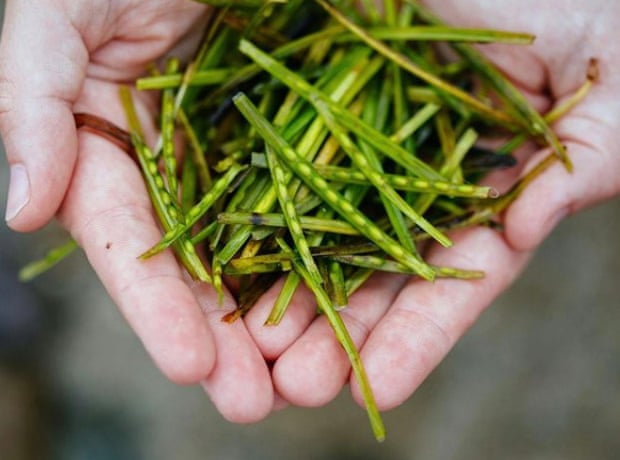
The way Stroud sees it, seagrasses are a prime example of the wonders that our shores have in store, if we are willing to protect these precious habitats rather than defacing them for our narrow take on what constitutes a beach idyll.
“It’s common for seagrasses to be removed so that a beach looks more like the postcards,” says Leanne Cullen-Unsworth, founder of Project Seagrass. In collaboration with the Wildlife Trust, Project Seagrass is working to raise awareness of this undersung habitat, as pilot projects in the Isle of Wight and Pembrokeshire explore how to best regrow Britain’s eroded intertidal orchards.
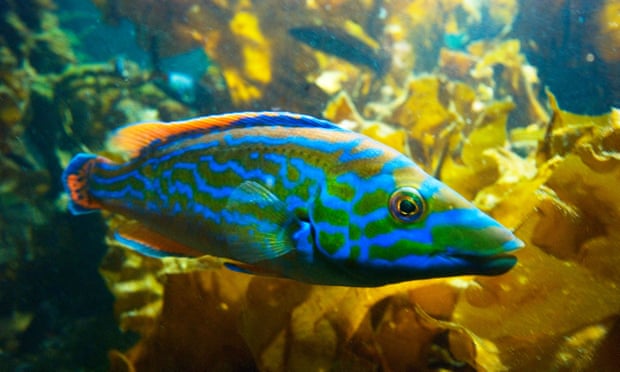
In 2021, the Wildlife Trust undertook its first deployment of 1,025 mixed seagrassed seed bombs into mudflats on the Isle of Wight’s Langstone Harbour; they will mature into adult seagrasses this summer.
As well as tracking the presence and health of Solent seagrasses, we are here today to monitor intertidal animal and algae species. The trust’s volunteer survey data, alongside data from the Wildlife Trust’s Shoresearch programme, will be used by government adviser Natural England to monitor the effects of global heating. On a survey in 2020, the team spotted the bright-pink eggs of a breeding sea hare – a snouted pink sea snail more commonly found on the California coast. Brightly coloured European and cuckoo wrasse fish have been recorded at Keyhaven in Hampshire.
“There are some species we keep an eye out for,” says Stroud, “as they are climate change indicators, like peacock’s tail algae. We’re at the eastern limit for that scarce species here, so if its dispersal starts to move further north, we can assume something is seriously afoot with sea temperatures.”
Fellow marine volunteer Sarah wants to set up a weekend rock-pooling school for Isle of Wight children, and is keen to get to know her brittle stars from her bryozoans. “It’s not quite swimming cozzie and sunglasses,” she laughs.
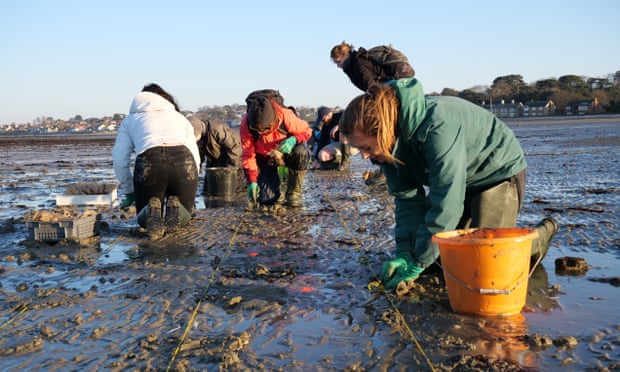
We peer underneath rocks as seagulls caw around us and kitesurfers carve across a bay bathed in spring sunshine. “Look,” she says, her camera trained on a rock pool that shines an almost metallic cobalt, reflecting the blue sky above. As Kevin totes the clipboard on which he’s logging our living discoveries, Sarah gingerly picks up a green shore crab, which has the rounder abdomen of a female, and wriggles its shapely legs around her fingers. “Lovely, isn’t she?” Sarah says, in awe.
Today’s marine volunteers are a mixed bunch: locals such as Sarah and Kevin, but also visitors from the mainland like me. In summer, Stroud tells me, they see more mainlanders, combining a stint of marine volunteering with a trip to the handsome halls of Queen Victoria’s later-life retreat, Osborne House, or the island’s other eco attractions, which include Tapnell Farm, where I’m staying.
A former dairy farm in the west of the island, Tapnell is one of Britain’s handful of energy-positive family resorts. It sends sufficient electricity back to the grid to power 100 homes each year, on a site that features eco pods made with natural materials and supplied by water from a borehole, a low-waste restaurant and an animal rescue centre that’s home to wallabies, Vietnamese pot-bellied pigs and meerkats.
At St Helens, with the sun setting over the Solent, it’s time for this group of budding marine champions to retreat before the tide rolls in. “We don’t have the risk assessment to turn you into mermaids!” our leader shouts across 12 heads, which are inquisitively drooped over rock pools like spring daffodils.
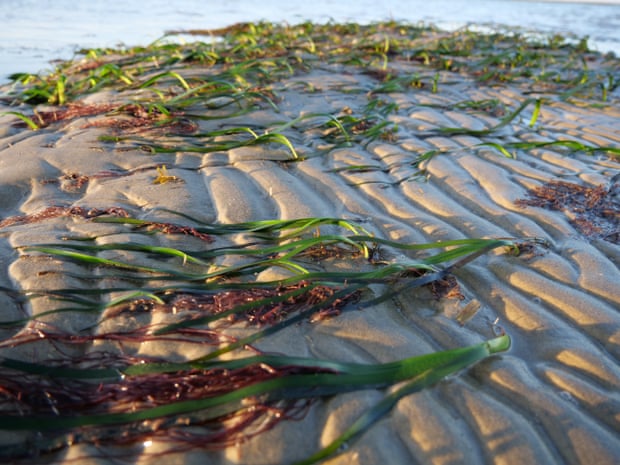
“Did you know that the teeth of the common limpet are the strongest natural material ever found on Earth?” Stroud asks, gesturing with a strand of green-fronded eelgrass that had become unrooted in the intertidal zone. “They’re stronger than diamonds: isn’t that awesome?”
And with that we’re padding back across the rock pools in our wellies, with a feelgood glow that beats any beach tan.
Hampshire and Isle of Wight Wildlife Trust’s seagrass survey volunteer days are free and take place at various locations. Accommodation was provided by Tapnell Farm, whose pod sleeping four cost from £112 a night. Ferry transport was provided by Wightlink, which has a new low-carbon hybrid vessel, Victoria Isle of Wight, from Portsmouth to Fishbourne, returns from £26.80 (on foot or bicycle).
Three more beach-saving breaks
Beach litter-picking, Cornwall
Plastic litter is the scourge of many coastal areas, affecting water quality and choking wildlife. From the secluded coves of Polperro to the expansive sands of Penzance, Clean Cornwall organises regular, small-scale, county-wide clean-ups that anyone can join. cleancornwall.org
Seagrass planting, Pembrokeshire
Project Seagrass’s first large-scale project, Seagrass Ocean Rescue, is re-establishing a huge seagrass meadow in Dale, west Wales, with seedlings raised from seeds gathered along the British coast. Find volunteer opportunities on the Facebook group volunteer page. facebook.com
Seaweed search, Scottish coast
The Scottish coast is home to some of the world’s largest fields of CO2-storing kelp. Teaming up with the Natural History Museum, the Big Seaweed Search volunteer programme helps to map the distribution of 14 key species of seaweed, to preserve their health and future ocean diversity. Register for free, download your recording form and find information on sites at mcsuk.org
 Top Naija News: Nigerian News, Breaking News Nigeria and World News Top Naija News is a daily news publication in Nigeria, delivering the latest breaking news in Nigeria and around the world.
Top Naija News: Nigerian News, Breaking News Nigeria and World News Top Naija News is a daily news publication in Nigeria, delivering the latest breaking news in Nigeria and around the world.
